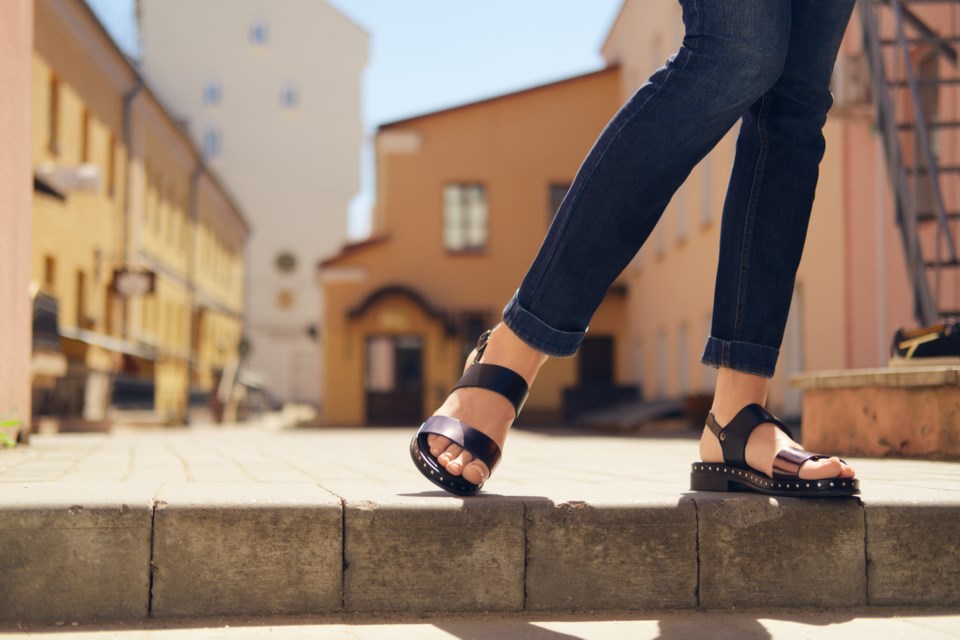Bare feet and sandal season is right around the corner. Are your feet ready?
If you have been keeping warts, corns, or fungus under wraps for the winter, it is time to take care of your feet so you can enjoy a pain-free summer. Meghan Knox, clinic manager and Certified Canadian pedorthist at BioPed in Guelph, explains the differences between warts and corns as well as sheds some light on nail fungus.
Warts Can Spread
Warts, which are caused by the human papilloma virus (HPV), are contagious. They can multiply in the same area and cause a cluster of warts and they can spread to other people. In most cases, warts are contracted when walking barefoot in places like a swimming pool or change room.
“When you squeeze or apply pressure to a wart, it causes pain. You can most likely see a little tiny black dot in the centre of the lump, which is the wart’s root,” explains Meghan.
Treating warts at home can be frustrating. Meghan suggests vising an advanced footcare nurse or chiropodist to get the fastest results. “Freezing warts rarely works for people. Professional treatment starts with preparing the area properly and then apply a cream to kill the wart,” she says.
You can reduce the chances of contracting a wart by wearing sandals in communal areas, especially if they are damp or humid.
Corns Aren’t Contagious
Corns can look and feel a lot like warts but treating them is very different. Corns are actually caused by excessive friction or pressure on a specific area of your foot. Most often, tight ill-fitting shoes are the problem.
Over-the-counter corn pads can reduce the pressure on the area, but they don’t do much more than that. “The best treatment for a corn is to get it removed by a professional. That way you get immediate relief,” suggests Meghan.
“Corns are formed by the way that your foot moves and by the structure of your foot itself. Most people will need an orthotic to take the pressure off the area so the corn does not build up again,” she continues.
Nail Fungus and Athlete’s Foot
Nail fungus and athlete’s foot are both fungal infections that can be difficult to get rid of. Nail fungus is easier to spot since it causes the nails to become thickened and crumbly. Nails can also look discoloured and could have an unpleasant odor. Athlete’s foot looks a little bit like dry skin, except it generally only occurs on the soles of the feet and/or between the toes.
Meghan explains, “A lot of people don't know when they have a fungus or that it can spread from nail to nail. And a lot of the over-the-counter ointments can burn the skin around it. The nurses here will remove the dead areas of the nail so the medication can absorb properly. Once the fungus has been treated, the nail will grow like a healthy, normal nail again.”
To avoid picking up a nail fungus, make sure to wear footwear at the pool, in the sauna, and in the change rooms. Also ensure that your pedicurist uses medical grade sterilizers for their tools.
“Overall, if you suspect that you have a wart, corn, or nail fungus, it is best to consult with an advanced footcare nurse or chiropodist so you can get relief as soon as possible,” says Meghan.
For more information about warts, corns, and nail fungus or to book an assessment, visit BioPed in Guelph online or in person at 102 Wyndham Street North.
